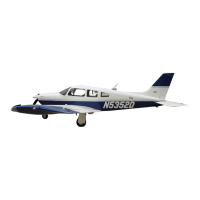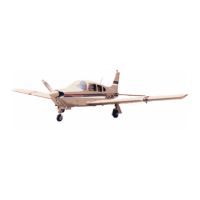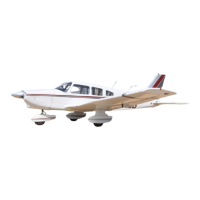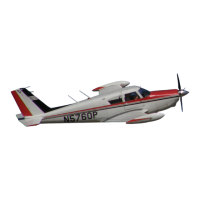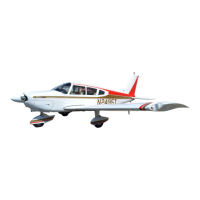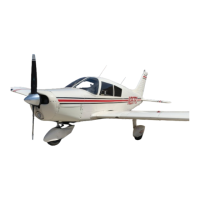REMOVAL AND DISASSEMBLY OF WHEEL BRAKE ASSEMBLY. (Refer to Figure 32-14.)
1. To remove the brake assembly, first disconnect the brake line from the brake cylinder at the tube
fitting.
2. Remove the cap bolts that join the brake cylinder housing and the lining back plate assembly. Remove
the back plate from between the brake disc and whee1.
3. Slide the brake cylinder housing from the torque plate.
4. Remove the pressure plate by sliding it off the anchor bolts of the housing.
5. The piston(s) may be removed by injecting low air pressure in the cylinder fluid inlet and forcing the
piston from the housing.
6. Check anchor bolt for wear.
7. Remove anchor bolt by the following procedures:
A. Position cylinder assembly on a holding fixture. (Refer to Figure 32-15.)
B. Use a suitable arbor press to remove the anchor bolt from the cylinder body.
CLEANING, INSPECTION AND REPAIR OF WHEEL BRAKE ASSEMBLY.
1. Clean the assembly with a suitable solvent and dry thoroughly.
2. Check the wall of the cylinder housing and piston for scratches, burrs, corrosion, etc., that may
damage O-rings.
3. Check the general condition of the brake bleeder screw and lines.
4. Check the brake disc for wear, grooves, scratches or pits. Wear of the disc should not be less than
0.205 of an inch at its thinnest point. A single groove or isolated grooves up to 0.031 of an inch deep would
not necessitate replacement, but a grooving of the entire surface would reduce lining life and should be
replaced. Should it be necessary to remove the wheel disc, refer to Removal and Disassembly of Main Wheel.
5. Lining may be removed from the backing plate by drilling or punching out the old rivets, and installing
a new set using the proper rivets and a rivet set that will properly stake the lining and form a correct flare of
the rivet.
6. Upon installation of new brake linings, they should be conditioned by performing a minimum of six
light pedal effort braking applications from 25 to 40 mph. Allow the brake discs to partially cool between
stops.
ASSEMBLY AND INSTALLATION OF WHEEL BRAKE ASSEMBLY. (Refer to Figure 32-14.)
1. Lubricate the piston O-ring(s) with fluid MIL-H-5606 and install on piston(s). Slide the piston in
cylinder housing until flush with surface of housing.
2. Slide the lining pressure plate onto the anchor bolts of the housing.
3. Slide the cylinder housing assembly on the torque plate of the gear.
4. Position the lining back plate between the wheel and brake disc. Install the bolts and torque to 40
inch-pounds to secure the assembly.
5. Connect the brake line to the brake cylinder housing.
6. Bleed the brake system as described in Bleeding Brakes.
32-40-10
Page 32-44
Revised: July 24, 1981
2F3
PIPER AIRCRAFT
PA-28RT-201 / 201T
MAINTENANCE MANUAL

